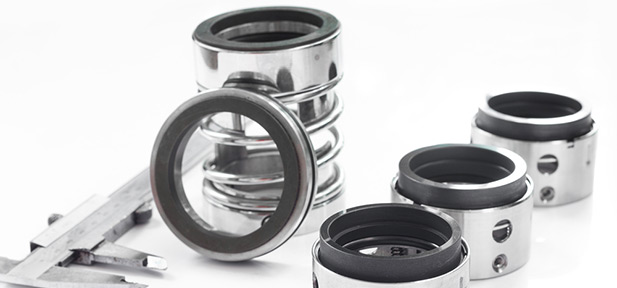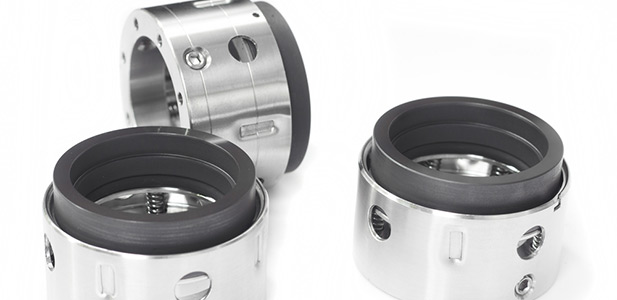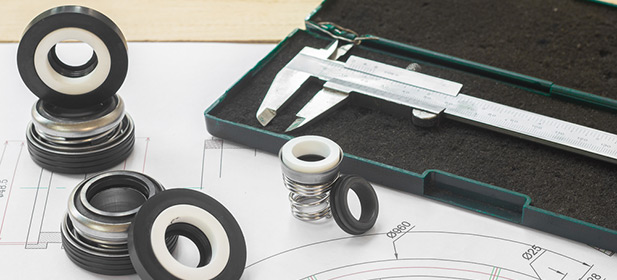
Mechanical seals come in different configurations, and each variant has its advantages and disadvantages. Among the most common variants are component mechanical seals and cartridge mechanical seals.
This article identifies the main characteristics of both component and cartridge seal types and how they differ.
Cartridge vs. Component Mechanical Seal
When selecting a mechanical seal type, pump users must consider the cost of installation, long term running costs, pump characteristics, and the anticipated operational conditions (heat, vibration, and pressure). Keep your technical staff in mind as well, because having a skilled technician on-hand for regular maintenance vs. having to outsource maintenance and repairs makes a significant difference.
These factors will determine whether a component seal is preferable to a cartridge seal.
What Is a Cartridge Seal?

A cartridge mechanical seal is a completely enclosed seal system with preassembled components. Typically, this seal type is composed of a gland, sleeve, and other hardware that make pre-assembly possible.
Refer to our blog post about different mechanical seal types for a more exhaustive list.
Advantages of Cartridge Type Mechanical Seals
The major benefits of choosing cartridge seals for your pump seal system include:
- Easy / Simple installation (No specialist necessary)
- Higher functional security due to pre-assembled seal with fix axial settings. Eliminate measuring errors.
- Eliminated the possibility of axial misplacement and resulting seal performance issues
- Prevention of dirt entry or damaging of the seal faces
- Reduced installation costs through reduced installation time = Reduced down times during maintenance
- Potential to reduce the degree of pump disassembly for seal replacement
- Cartridge units are easily repairable
- Protection of customer shaft / shaft sleeve
- No need for custom made shafts to operate a balanced seal due to the internal shaft sleeve of the seal cartridge.
Disadvantages of Cartridge Type Mechanical Seals
A disadvantage to selecting a cartridge type mechanical seal is the higher initial cost and the additional required space.
To design a ready-to-go cartridge seal much information is necessary upfront.
What Is a Component Seal?

Component mechanical seals are composed of separate dynamic and stationary parts. Unlike cartridge seals, component seals are not preassembled and require skilled technicians to install them. Incorrect installation of seal faces, O-rings, and seal axial setting on the pump shaft will result in reduced seal life or in some cases, immediate seal failure.
Advantages of Non-cartridge Type Mechanical Seals
The benefits of selecting non-cartridge seals for your mechanical seal support systems include:
- Reduced expenses on initial seal purchase
- Reduced spares costs as the individual components can be stocked vs. the entire seal
- Superior adaptability to very small pumps
Disadvantages of Non-cartridge Type Mechanical Seals
The major cons for non-cartridge mechanical seals are their susceptibility to damage. Other than cartridge type seals that are completely encased within secure housings, component mechanical seals usually have exposed parts that are more susceptible to damage during transportation or installation.
Further, non-cartridge type seals require precise measurements during installation to prevent seal failure. Properly installing this type of seal requires more operator time and thus a higher cost to install or re-install after a repair.
Flexaseal Can Help Extend the Lifetime of Your Mechanical Seals
Flexaseal Engineered Seals and Systems, LLC is dedicated to providing innovative mechanical seal solutions for all industries.
Contact us today for a quote or to learn more about our line of mechanical seals and support systems.
